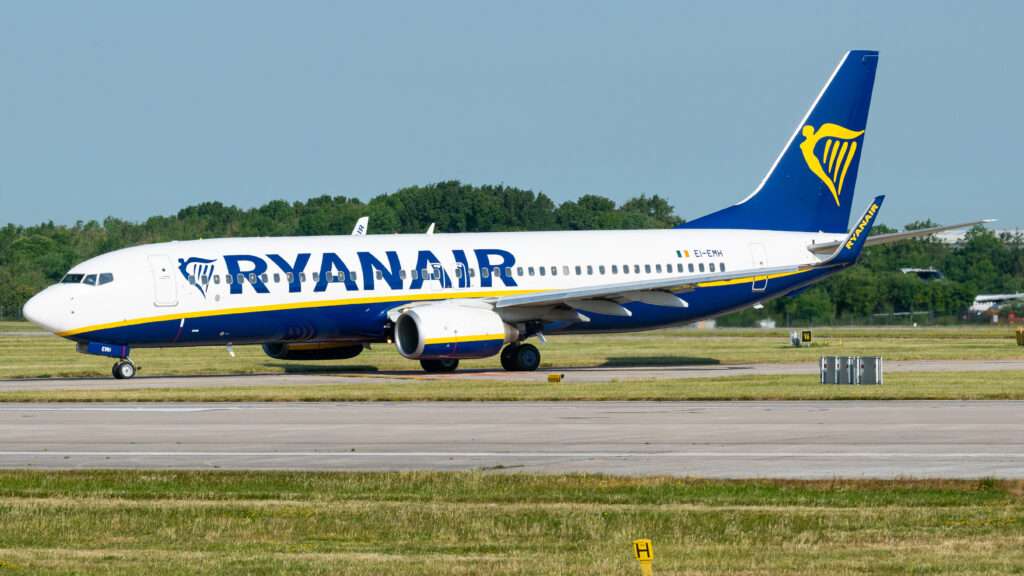Late last night, a Ryanair flight between Faro and Bournemouth had to divert to London Gatwick with a flap issue.
This issue happened not long after an easyJet flight from Madeira declared an emergency due to smoke in the cabin.
Without further ado, let’s get into it…
The Ryanair Flight To Bournemouth That Diverted To London Gatwick…

Ryanair flight FR3945 is a routine scheduled flight between Faro and Bournemouth.
The affected rotation, that diverted to London Gatwick, was operated by EI-EMF.
As per data from Planespotters.net, EI-EMF is a 13.9 year old Boeing 737-800 that was delivered to the airline in April 2010.
Ryanair flight FR3945 departed Faro at 1921 local time last night and proceeded upwards to Bournemouth.
On approach to destination, the aircraft commenced a go-around and proceeded immediately to London Gatwick.
FR3945 landed safely at 2249 local time.
The Issue?: Flaps…
Earlier tonight Ryanair flight FR3945 diverted to Gatwick after flight deck reported issue with flaps on approach to Bournemouth…@RadarBoxCom pic.twitter.com/8hO3tw5TcS
— Flight Emergency (@FlightEmergency) February 26, 2024
As per @FlightEmergency on X, the reason for the diversion was due to a reported issue with the flaps on approach.
With London Gatwick being a larger airport than Bournemouth, this would be why the crew opted to divert.
Flap issues do happen regularly, with there being necessary steps in place to combat this issue.
Let’s explore why a diversion to Gatwick would be more sufficient than just landing in it’s original destination as intended.
Why Would This Issue Require Such Action?: Longer Runways…

When there is a flap issue, the pilots on an aircraft won’t have enough drag to get down to their optimal approach speed.
Such speeds are planned prior to arrival, with a relevant setting on the airplane to achieve this.
In the context of Bournemouth, it was no doubt realised that because a high speed approach would be needed, they wouldn’t have enough runway length to do this.
At EGHH, based on information from charts, the runway is 7,454 feet long.
Whereas, at London Gatwick, the longest runway is 10,883 feet long, a mere 3,000 feet of difference.
For high speed approaches like this, you would need more runway so then you have enough to come to a stop safely.
Risking this at airports with less runway puts you at a chance of overshooting the runway, which is not a safe option overall.
At the time of writing (27/2/24 @ 1020 UK time), EI-EMF remains on the ground at London Gatwick.
It is unclear how long it will take to fix the issue, as well as whether it will position to Bournemouth again.
For an incident like this, the judgement call made by the pilots on Ryanair flight FR3945 was the correct one.
As soon as we have more information regarding this incident, then we will update this article accordingly.

Click the banner to subscribe to our weekly Emergencies and Incidents newsletter.

Click the photo to join our WhatsApp channel so then you can stay up to date with everything going on in the aviation industry!









